SPRINGS
DEFINITION FOR SPRING:
Springs are elastic bodies (generally metal) that can be twisted, pulled, or stretched by some force. They can return to their original shape when the force is released. In other words it is also termed as a resilient member.
CLASSIFICATION OF SPRINGS:
Based on the shape behavior obtained by some applied force, springs are classified into the following ways:
SPRINGS
HELICAL SPRINGS LEAF SPRINGS
SPIRAL SPRINGS
TORSION SPRING
TENSION HELICAL
SPRING COMPRESSION
HELICAL SPRING
I. HELICAL SPRINGS:
DEFINITON:
It is made of wire coiled in the form of helix.
CROSS-SECTION:
Circular, square or rectangular
CLASSIFICATION:
1) Open coil springs (or) Compression helical springs
2) Closed coil springs (or) Tension helical springs
1) HELICAL TENSION SPRINGS:
CHARACTERISTICS:
FIGURE1.TENSION HELICAL SPRING
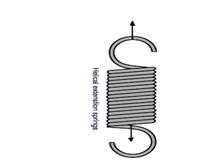
FIGURE2.TYPES OF END HOOKS OF A HELICAL EXTENSION SPRING

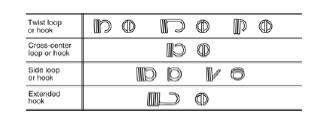
APPLICATIONS:
2) HELICAL COMPRESSION SPRINGS:
CHARACTERISTICS:
1) Plain end
2) Plain and ground end
3) Squared end
4) Squared and ground end
Among the four types, the plain end type is less expensive to manufacture. It tends to bow sideways when applying a compressive load.
FIGURE3.COMPRESSION HELICAL SPRING


APPLICATIONS:
3) TORSION SPRINGS:
CHARACTERISTICS:
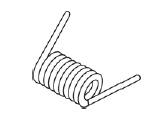
FIGURE4.TORSION SPRING
APPLICATIONS:
4) SPIRAL SPRINGS:
CHARACTERISTICS:
APPLICATIONS:
FIGURE5. SPIRAL SPRING

II. LEAF SPRING:
DEFINITION:
A Leaf spring is a simple form of spring commonly used in the suspension vehicles.
FIGURE6.LEAF SPRING

CHARACTERISTICS:

FIGURE7.LEAF SPRINGS-FABRICATION STAGES
FIGURE8.NIPPING IN LEAF SPRINGS

APPLICATIONS:
Mainly in automobiles suspension systems.
ADVANTAGES:
SPRING MATERIALS:
The mainly used material for manufacturing the springs are as follows:
Depending upon the strength of the material,The material is Selected for the design of the spring as shown in figure9.
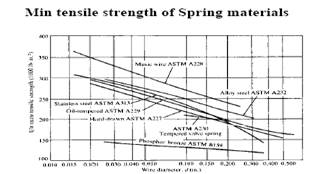

FIGURE9:MATERIAL SELECTION FOR DESIGN OF SPRING
NOMENCLATURE OF SPRING:
Figure10 and Figure11 shows the momenclature of the spring under loading conditions.
Active Coils
Those coils which are free to deflect under load.
Angular relationship of ends
The relative position of the plane of the hooks or loops of extension spring to each other.
Buckling
Bowing or lateral deflection of compression springs when compressed, related to the slenderness ration (L/D).
Closed ends
Ends of compression springs where the pitch of the end coils is reduced so that the end coils touch.
Closed and ground ends
As with closed ends, except that the end is ground to provide a flat plane.
Close-wound
Coiled with adjacent coils touching.
Deflection
Motion of the spring ends or arms under the application or removal of an external load.
Elastic limit
Maximum stress to which a material may be subjected without permanent set.
Endurance limit
Maximum stress at which any given material may operate indefinitely without failure for a given minimum stress.
Free angle
Angle between the arms of a torsion spring when the spring is not loaded.
Free length
The overall length of a spring in the unloaded position.
Frequency (natural)
The lowest inherent rate of free vibration of a spring itself (usually in cycles per second) with ends restrained.
Hysteresis
The mechanical energy loss that always occurs under cyclical loading and unloading of a spring, proportional to the are between the loading and unloading load-deflection curves within the elastic range of a spring.
Initial tension
The force that tends to keep the coils of an extension spring closed and which must be overcome before the coil starts to open.
Loops
Coil-like wire shapes at the ends of extension springs that provide for attachment and force application.
Mean coil diameter
Outside wire diameter minus one wire diameter.
Modulus in shear or torsion
Coefficient of stiffness for extension and compression springs.
Modulus in tension or bending
Coefficient of stiffness used for torsion and flat springs. (Young's modulus).
Open ends, not ground
End of a compression spring with a constant pitch for each coil.
Open ends ground
"Opens ends, not ground" followed by an end grinding operation.
Permanent set
A material that is deflected so far that its elastic properties have been exceeded and it does not return to its original condition upon release of load is said to have taken a "permanent set".
Pitch
The distance from center to center of the wire in adjacent active coils.
Spring Rate (or) Stiffness (or) spring constant
Changes in load per unit of deflection, generally given in Kilo Newton per meter. (KN/m).
Remove set
The process of closing to a solid height a compression spring which has been coiled longer than the desired finished length, so as to increase the elastic limit.
Set
Permanent distortion which occurs when a spring is stressed beyond the elastic limit of the material.
Slenderness ratio
Ratio of spring length to mean coil diameter.
Solid height
Length of a compression spring when under sufficient load to bring all coils into contact with adjacent coils.
Spring index
Ratio of mean coil diameter to wire diameter.
Stress range
The difference in operating stresses at minimum and maximum loads.
Squareness of ends
Angular deviation between the axis o a compression spring and a normal to the plane of the other ends.
Squareness under load
As in squareness of ends, except with the spring under load.
Torque
A twisting action in torsion springs which tends to produce rotation, equal to the load multiplied by the distance (or moment arm) from the load to the axis of the spring body. Usually expressed in inch-oz, inch-pounds or in foot-pounds.
Total number of coils
Number of active coils plus the coils forming the ends.
Spring index: The ratio between Mean diameter of coil to the diameter of the wire.
Solid length: It is the product of total number of coils and the diameter of the wire when the spring is in the compressed state. It is otherwise called as Solid height also.
FIGURE10.NOMENCLATURE OF SPRING

FIGURE11.HELICAL SPRING IN LOADED END CONDITION
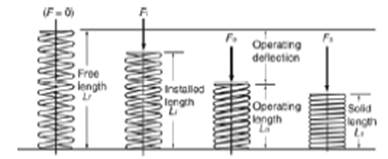
Depending upon the type of the compression helical spring the numbers of coils are decided as shown in figure12.The Pitch angle is calculated as shown in figure13.
FIGURE12.RELATION BETWEEN ENDS AND NOMENCLATURE OF A COMPRESSION HELICAL SPRING

FIGURE13.RELATION BETWEEN PITCH AND MEAN DIAMETER OF COIL


SPRINGS IN PARALLEL AND SERIES:
As the springs are generally used to store and release energy, it is very much important to know about the different combination of the springs when they are in parallel, series and combination of both.
Each spring system is characterized by its own spring constant. Spring constant can be determined by the use of Hookes law:
![]()
Where: F = Applied force Δ= the resulting displacement
So when the springs are in series as shown in figure14:
Let Δ1, Δ2, ΔTOTAL be the resulting displacements of two springs produced by the applied forces F1, F2, FTOTAL used in the given system
FIGURE14.SPRINGS IN SERIES

Similarly, when the springs are in parallel, the displacements (Δ) produced by the springs are equal and unequal which is shown in figure15 and figure16.
SPRINGS IN PARALLEL
FIGURE15.SYMMETRICAL DISPLACEMENT CASE (Δ1= Δ2)
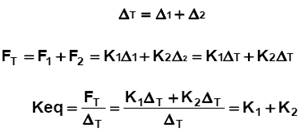
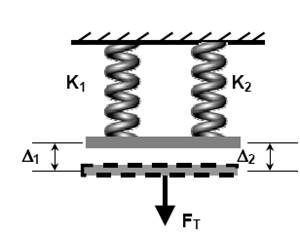
 FIGURE16.UNSYMMETRIC DISPLACEMENTS CASE (Δ1, Δ2, ΔTOTAL)
FIGURE16.UNSYMMETRIC DISPLACEMENTS CASE (Δ1, Δ2, ΔTOTAL)
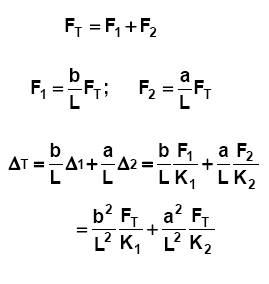

Figure17 shows the system of the spring when they are in series and parallel.
FIGURE17.COMBINED SYSTEM (BOTH SERIES AND PARALLEL)
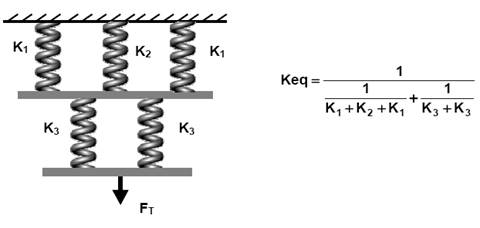
2 MARK QUESTIONS:
1) Define Spring.
2) Classify springs.
3) State the materials used for manufacturing springs.
4) Define Solid length.
5) Define free length.
6) Write the formula to find Pitch angle of a spring.
7) Define Pitch of the spring.
8) Define slenderness ratio of a spring.
9) Define Stiffness of a spring.
10) Define Endurance stress of a spring.
11) Define Hysterisis of a spring.
12) Define Nipping of a leaf spring.
13) What are the applications of helical springs?
14) Write down the formula used for finding the stiffness of two springs when they are in parallel with their resulting displacements not equal.
14 MARK QUSTIONS:
1) Explain the classification of the springs in detail with neat sketches.
2) Explain the nomenclature of the spring in detail with a neat diagram.
3) What is nipping? Explain the characteristic of leaf spring with diagram.
4) Why the springs are kept in series (or) parallel (or) combination of both? Determine the stiffness in each case in detail with neat sketches.
BIBLIOGRAPHY:
1) www.webs1.vidaho.edu
2) www.springer.com
3) www.indialeaf.com
4) www.engineersedge.com/spring_terms.html
5) www.sprind.com/springterm.html
6) http://nptel.iitm.ac.in
7) www.instructables.com
8) www.tpub.com/content/engine/4037/css/14037_77.html
9) www.physicsbrown.edu
10) www.csun.edu
Source: http://www.srmuniv.ac.in/downloads/springs.doc
Web site to visit: http://www.srmuniv.ac.in/
Author of the text: indicated on the source document of the above text
If you are the author of the text above and you not agree to share your knowledge for teaching, research, scholarship (for fair use as indicated in the United States copyrigh low) please send us an e-mail and we will remove your text quickly. Fair use is a limitation and exception to the exclusive right granted by copyright law to the author of a creative work. In United States copyright law, fair use is a doctrine that permits limited use of copyrighted material without acquiring permission from the rights holders. Examples of fair use include commentary, search engines, criticism, news reporting, research, teaching, library archiving and scholarship. It provides for the legal, unlicensed citation or incorporation of copyrighted material in another author's work under a four-factor balancing test. (source: http://en.wikipedia.org/wiki/Fair_use)
The information of medicine and health contained in the site are of a general nature and purpose which is purely informative and for this reason may not replace in any case, the council of a doctor or a qualified entity legally to the profession.
The texts are the property of their respective authors and we thank them for giving us the opportunity to share for free to students, teachers and users of the Web their texts will used only for illustrative educational and scientific purposes only.
All the information in our site are given for nonprofit educational purposes